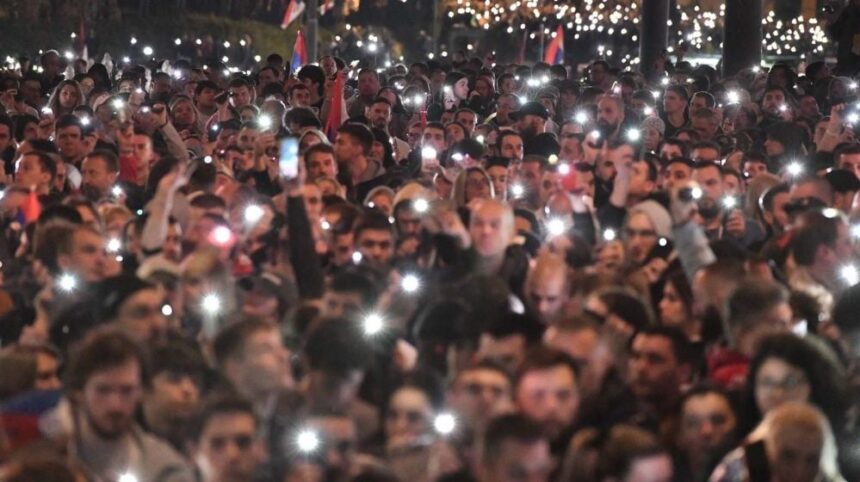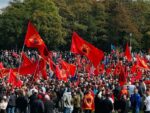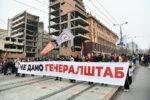Deutsche Welle reports that Serbia’s socio-political crisis, ongoing since November 1, shows no sign of ending. Students are calling for another massive protest, and many are questioning whether Vidovdan, on June 28, will become a new March 15 – a date etched in Belgrade’s memory for its colossal demonstration.
Another Show of Strength
Belgrade’s streets witnessed an unprecedented event on March 15, when over 300,000 demonstrators gathered, marking what many observers called the largest protest in Serbian history. However, despite high expectations, many left disappointed, feeling that the protest hadn’t brought about revolutionary change.
Three months later, with the message “The city is crowded? It’ll be even more crowded,” students have reignited hopes among a segment of the population that has been fighting for change for months. June 28, Vidovdan, is now the new date attracting the attention of the entire Serbian public.
Political analyst Viktor Stamenković views the announced protest as “another show of strength” and a “good indicator of whether the energy and power of the student protests have subsided.” He notes a period of calm and potential fatigue, suggesting students aim to “revitalize the energy of this continuous protest.” While a repeat of the March 15 turnout is unlikely, a comparable number would be significant for the students.
Symbolic Date and “Reclaiming” National Symbols
Stamenković explains that the choice of Vidovdan, a highly important symbolic date in Serbian history, is a deliberate part of the students’ ongoing process. “This can be seen as the next step in what the students started, which is ‘reclaiming’ national symbols from the hands of the regime and returning the flag, patriotic songs, and national holidays to the people’s hands. This is a process that has been ongoing since November and has been very successful for the students.”
A Test of Endurance Against the Authorities
The June 28 protest will be the first major demonstration since the local elections in Kosjerić and Zaječar, where the ruling SNS secured narrow victories amidst numerous reported irregularities.
Zoran Stojiljković, a retired professor from the Faculty of Political Sciences, observes a “balance of power or powerlessness between the authorities, protesting students, and supporting citizens” following these elections. The crucial question now, he says, is “who will endure longer.”
“What decides is the level of political mobilization. The student-led movement has been unbelievably long-lasting, and if this June 28 protest proves to be massive, the authorities cannot even think that they have bought time and that the issue has ended in apathy and an endlessly long process of trying to pressure universities with various threats,” Stojiljković explains to DW. He views the upcoming protest as a way to maintain permanent pressure on the authorities.
Divided Student Expectations
Students interviewed by DW expressed mixed opinions and expectations for the upcoming protest. Teodora, a Belgrade university student, sees Vidovdan as a “continuation of March 15.” She expects that what was missing then, now fueled by electoral manipulations, will “culminate on June 28.” While anticipating a peaceful protest, she feels it might be time for “something radical to finally happen,” hoping for a change significant enough to force new elections.
Conversely, Petar, another student, has lower expectations but hopes for “at least a new Slavija,” referencing the first major student protest in Belgrade last December, which drew over 100,000 people. He expects a peaceful protest but also anticipates “provocations from ‘Ćacilend’ [a derogatory term for the regime], sending thugs, and preventing people from reaching Belgrade.” He believes the protest will be “magnificent, but not that something colossal will change.”
The Path to “Colossal Change”
Analyzing the election results from Kosjerić and Zaječar, political scientist Stamenković suggests they revealed a “formula for success and a potential victory against the SNS: unity and cooperation with students.” This implies the opposition uniting on a single list and collaborating with students and all social actors. He argues that the SNS’s dominance since 2012 stemmed from a divided opposition. Now, it’s evident that the SNS is weaker against a “homogeneous mass” – a united opposition.
Professor Stojiljković concurs, emphasizing the need for a change in strategy. If early elections are unlikely, he suggests the idea of a purely student list, which might lead others to withdraw from the political space, is “quite obsolete.” Instead, he advocates for a “re-shaping of the student front” that incorporates the rational positions of the political opposition, alongside high engagement from civil society.
“It is no longer enough to just say we are against Vučić; we need to show on what issues, with what means, cadres, and capacity we can achieve something,” Stojiljković concludes.







